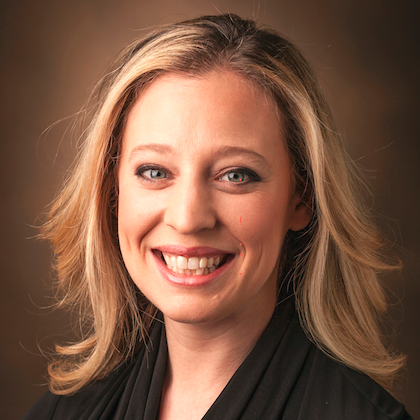Strategies for Lung Cancer Screening Implementation
Hybrid lung cancer screening programs use a combination of centralized and decentralized services.

Kim L. Sandler, MD
Program Structure
The structure of lung cancer screening (LCS) programs in the United States varies by resource availability, provider expertise, type of institution, and interests of the organization. Often these programs are developed through the reorganization of preexisting multidisciplinary models that have been providing services related to lung cancer. MD Magazine® reached out to experts from several medical centers across the country for details on their programs’ approaches.LCS programs typically fit into 1 of 3 categories: centralized, decentralized, or hybrid.
Centralized LCS programs are resource intensive and generally require the services of a coordinator, a clinician leader, and a multidisciplinary team. Among the services offered by these programs are education; recruitment for screening; scheduling; and ordering, performance, and interpretation of tests. These programs also play a major role in arranging consultations, follow-up testing, and tracking of patient outcomes.
In contrast, decentralized programs provide screening and interpretation services for referring providers, who are responsible for other aspects of care such as referral and follow-up of results.
Hybrid lung cancer screening programs use a combination of centralized and decentralized services. Components not addressed by the screening program are managed by patients’ primary care physicians.
The US Preventive Services Task Force (USPSTF), which issued the most recent lung cancer screening guidelines in 2013, emphasizes the importance of shared decision making in implementing a lung cancer screening program.1 Rather than uniformly recommending that all patients meeting eligibility criteria be screened, the USPSTF specifically states that patients should participate in a discussion of possible benefits, limitations, and known and unknown harms.1
Investigators at the Cleveland Clinic recently published findings showing that patients participating in shared decision-making visits for lung cancer screening had improved knowledge of age and smoking history eligibility criteria for screening, as well as the harms and benefits related to it.2
This shared decision-making model has been embraced by centralized lung cancer screening programs as well as many hybrid programs. To get a better sense of how centralized lung cancer screening programs are implementing shared decision making and other components, MD Magazine® spoke with Kim Sandler, MD, codirector of the Vanderbilt Lung Screening Program, to learn how the program works at Vanderbilt University Medical Center.
Panel Profiles
“We offer to perform the shared decision-making visits for all our patients and in doing so can significantly decrease the burden on referring providers,” Dr. Sandler explained. The program also provides smoking cessation counseling, documents components of the Prostate, Lung, Colorectal, and Ovarian risk prediction model, coordinates follow-up for abnormal findings, and schedules routine follow-up scans.Panelists from several medical centers across the country provided details about their programs’ approaches to implementing centralized, decentralized, or hybrid lung cancer screening programs.
Participating organizations were predominantly academic medical centers (9), with other panelists representing community teaching hospitals (2), large multispecialty group practices (3), a private health system (1), and a Veterans Affairs hospital system (1). Organizations were located primarily in 4 geographical regions: Massachusetts, the Midwest, the West Coast, and New York, New York.
Of the 16 participating organizations, 9 indicated that they use a hybrid lung cancer screening model that included both centralized and decentralized components. One organization uses a decentralized system, and 5 use a centralized system.
All organizations with centralized and hybrid programs reported using a centralized tracking system. Programs differed most in how screening orders are processed. Whereas centralized programs have personnel who complete this process, the hybrid systems generally rely on provider-initiated ordering for screening.
Lung cancer screening programs, whether centralized, hybrid, or decentralized, are often governed by a steering committee or other multidisciplinary team. Clinician specialists from pulmonary medicine, radiology, medical oncology, thoracic surgery, and radiation oncology participate in organizational efforts to establish policies and procedures and monitor implementation.
To track lung cancer screening activities, organizations use a variety of tools. Electronic medical record—based registries and other commercially developed databases are commonly used, as are dedicated and nondedicated internal databases developed by individual institutions.
Organizations serve a wide range of patient populations with their lung cancer screening programs. Most programs report serving minority groups, including African Americans and Hispanics. Other groups who benefit from these programs include socioeconomically disadvantaged populations who lack health insurance or who have Medicaid. Groups less commonly served by panelist organizations include those living not living in general urban areas; immigrants; and members of the military.
Sandler supports the movement toward centralization of lung cancer screening services. “There are enormous benefits to having a centralized program,” she said. “We have seen a significant increase in enrollment since moving to a centralized program. Our adherence rate [has] increased dramatically as well.
“I believe the more integration there is across the hospital system, the better,” Sandler continued. “Primary care doctors, radiologists, oncologists, surgeons, and others all want to provide the best care for patients. We know that screening for lung cancer saves lives, and we know that very few eligible patients are enrolling. We have a multidisciplinary team, and we are working to continue to increase awareness for lung screening across our area.”
References
- Thomson CC, McKee A, Borondy-Kitts A, et al; American Thoracic Society and American Lung Association. Implementation guide for lung cancer screening. lung.org/assets/documents/lung-cancer/implementation-guide-for-lung.pdf. Accessed November 5, 2018.
- Mazzone PJ, Tenenbaum A, Seeley M, et al. Impact of a lung cancer screening counseling and shared decision-making visit. Chest. 2017;151(3):572-578. doi: 10.1016/j.chest.2016.10.027.